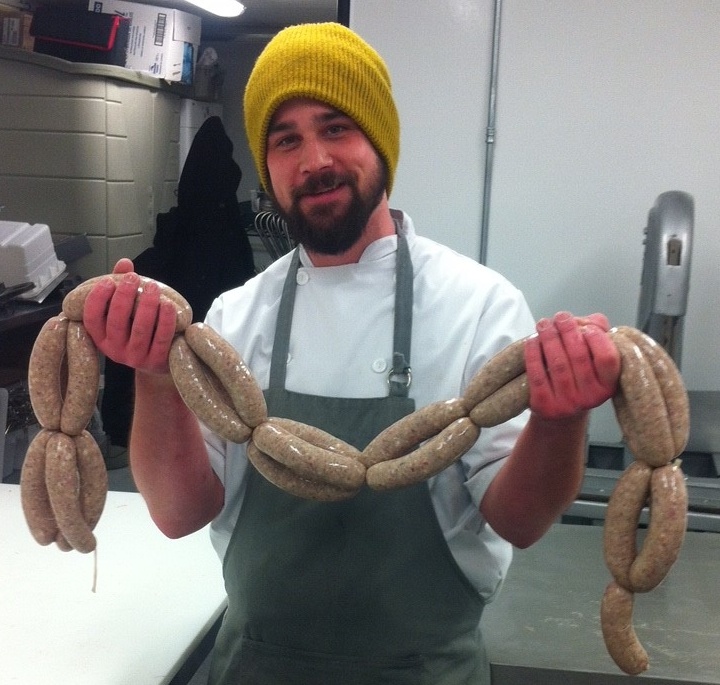One of our more popular classes at The Chopping Block is Steakhouse DIY. Many of our students sign up for this class for the simple reason that cooking a steak at home can be a terrifying experience. That's certainly understandable with today’s meat prices. For many, it feels like one wrong move in the kitchen, and you’ve made a costly mistake. But by following a few simple steps, you can create culinary steakhouse perfection.
Now I want you to go home, un-cork that fancy bottle of wine you have been saving, throw a potato or two in the oven, call your significant other and tell them that tonight you’re blowing their tastebuds up with a perfectly cooked steak.
Here's how:
Select your meat: There are many different steaks that one can choose for an amazing dinner, but let’s stick to the basics. For me, my money is on New York striploin or ribeye. These steaks have good meat to fat ratio, can be purchased for a reasonable price and don’t involve much butchery skill to get the best out of it (unlike flat-iron). You can buy one steak and cut it in half, like I have done here for lighter eaters. Just make sure that the thickness of the meat is between ¾ to 1 inch thick. Again, know your butcher...
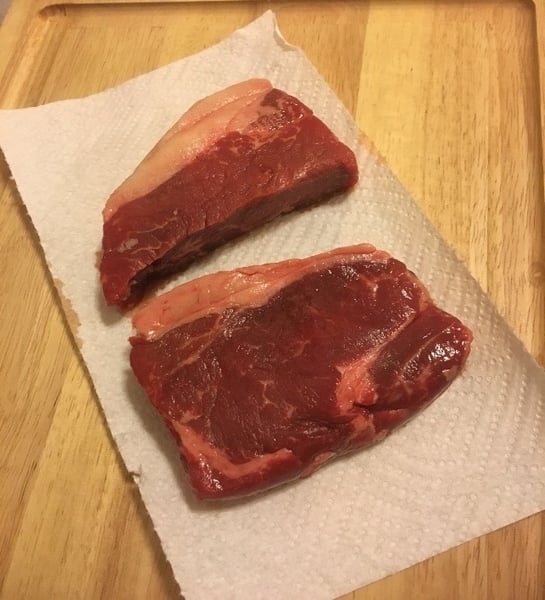
Preparing to Cook: Once home, allow your steaks to come to room temperature and allow to dry on a paper towel. Trim off any unwanted fat, but don’t get too crazy - fat bastes the meat during cooking and is the most flavorful part. This is the time that I get my favorite cast iron pan (all cast iron and cookware is 20% off this month at both of our locations) on medium heat ready to cook. Once I add the meat to the pan, I turn the heat up to medium-high. As soon as the rest of the meal is prepared and ready to go, I oil and salt the meat making sure to use a high temperature oil - either vegetable, canola, or grapeseed. This keeps excess oil from burning in the pan, which would make the meat taste bitter. Salting right before cooking prevents moisture being drawn out of the meat. Salt any earlier and you’ll also miss out on the dark and delicious crust on top.
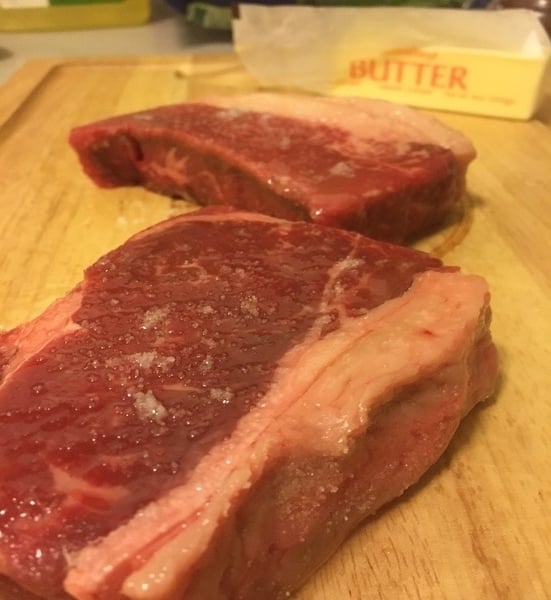 Cooking: Allowing your pan, preferably cast iron, to heat up in advance pours more heat into it preventing the temperature from dropping too low and losing that crust. How hot? Super-hot! Like “Dante’s Inferno” hot! Meat sticks in the pan for three reasons:
Cooking: Allowing your pan, preferably cast iron, to heat up in advance pours more heat into it preventing the temperature from dropping too low and losing that crust. How hot? Super-hot! Like “Dante’s Inferno” hot! Meat sticks in the pan for three reasons:
- We didn’t use enough oil, which we did.
- We didn’t get the pan hot enough, which we did.
- It’s not ready to turn over, so leave it alone!
This is the point I usually turn the heat up to medium high and allow the meat some time to do its thing. Giving exact cook times is a pointless exercise- there are just too many factors to calculate. But generally, it’s 2 mins per turn on a grated pan, making two turns per side and flipping once to repeat, or one turn on a flat pan with 3-4 minutes per side. All combined, that's 7-8 minutes’ total cook time, which with a steak at 1 inch thick should be around rare. However, use your chef sense. You can always make it up in the oven.
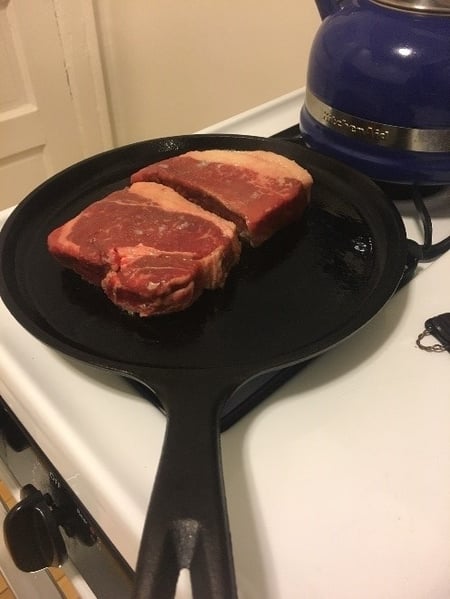
Once turned and cooked for the remaining 3-4 minutes on the second side, place tabs of butter over top and place into a 350’ degree oven to finish cooking, from 4-10 minutes depending on color desired.
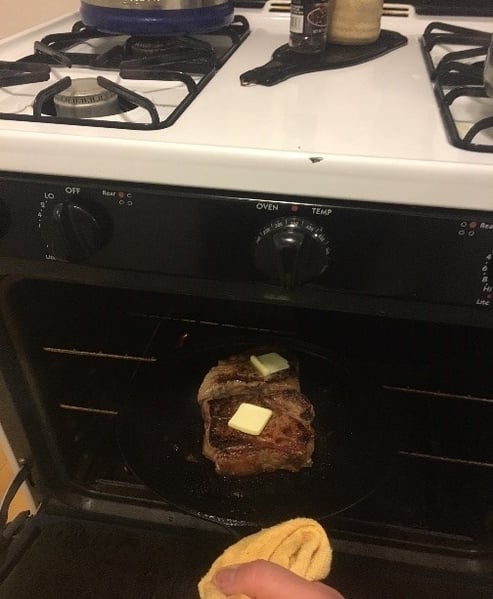
Doneness: By the second flip and 3-4 minutes of cooking (around 7-8 minutes total) your meat should be around rare. To check for doneness, place your index and thumb together and with the other hand poke the fatty part of your thumb, as shown. That’s what a rare steak, when poked, will feel like. Thumb to middle finger is medium, thumb to ring finger medium-well and thumb to pinky finger will be around well-done (aka Chicken). If you’ve ever seen a chef flash these crazy hand signs in the kitchen, this is what he was looking for.
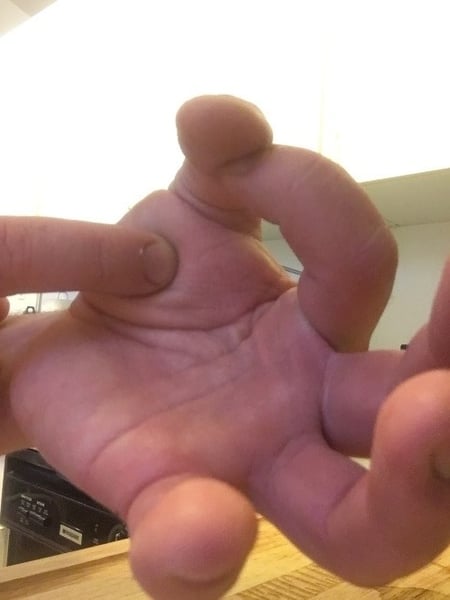 The other tell sign is when you flip the steak onto the second side and start to see blood pour out the top, you should be at about medium-rare into medium. A lot of blood means you’re at medium into medium-well. If you using a thermometer, it should read 125’ for rare, 135’ for medium-rare, 145’ for medium, 150’ for medium-well and 160’- measured at the center of the steak. Just remember to pull the steaks out at the color before the one desired, as the temperature will carry over as it continues to cook out of the oven. This is the hardest part to teach, but with practice and common sense you will prevail.
The other tell sign is when you flip the steak onto the second side and start to see blood pour out the top, you should be at about medium-rare into medium. A lot of blood means you’re at medium into medium-well. If you using a thermometer, it should read 125’ for rare, 135’ for medium-rare, 145’ for medium, 150’ for medium-well and 160’- measured at the center of the steak. Just remember to pull the steaks out at the color before the one desired, as the temperature will carry over as it continues to cook out of the oven. This is the hardest part to teach, but with practice and common sense you will prevail.
Finishing: Allow the steaks to rest. Most restaurants allow steak to rest on the fat side on its side- apparently to allow less juices to leach out. For me, I allow them to rest with another tab of butter on top (a French thing). This is the time to reseason with a coarse or finishing salt, since most has been washed off during cooking and ground pepper. Never pepper before cooking since it will scorch at the high temperature and turn bitter, unless you’re making steak au poivre. The French say you should rest for half as long as it took to cook. I say wait just long enough until you break down from starvation.
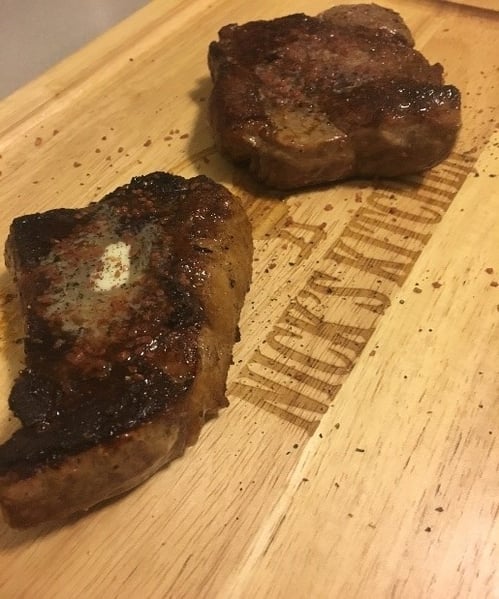 Slice, serve, and pat yourself on the back. You nailed it, champ!
Slice, serve, and pat yourself on the back. You nailed it, champ!
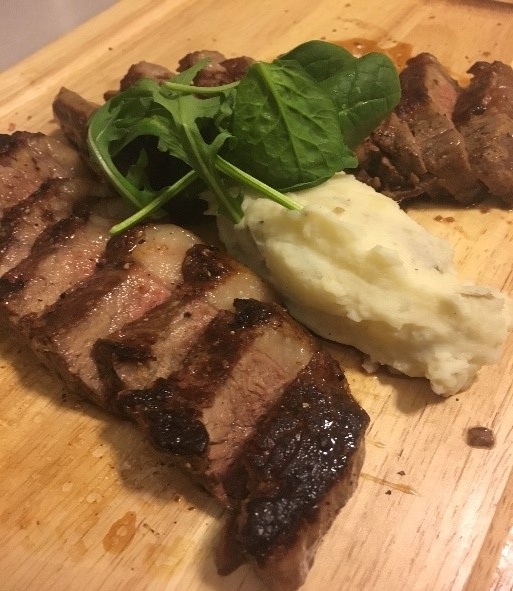 If you need a more hands-on approach to all of this, please join one of our many meat-based cookery classes like Meat 101, and let us help you take the stress out of date night.
If you need a more hands-on approach to all of this, please join one of our many meat-based cookery classes like Meat 101, and let us help you take the stress out of date night.


